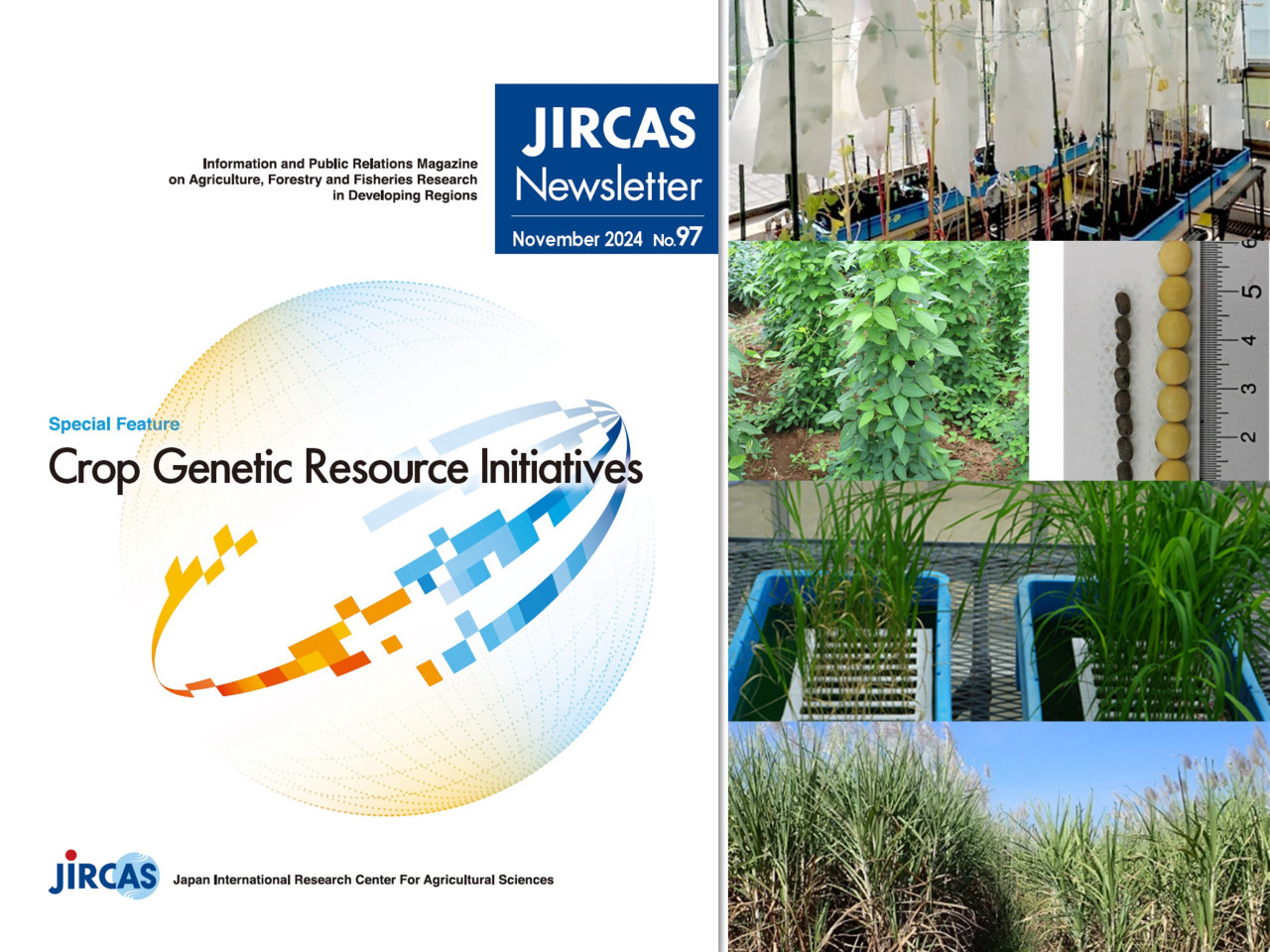Pick Up
1143. JIRCAS Crop Genetic Resource Initiatives

1143. JIRCAS’ Crop Genetic Resource Initiatives
Tomorrow, November 22nd, at the JIRCAS International Symposium 2024, we will discuss the role of resilient genetic resources in the age of global boiling.
JIRCAS International Symposium 2024: Resilient Genetic Resources for Food Security in the Era of Global Boiling –Opportunities and Challenges for Conservation and Utilization–
Date: 2024-11-22(Fri) 13:30~17:30 (13:00 Admission)(JST)
Place: U Thant International Conference Hall + Online (United Nations University 3F, 5-53-70 Jingu-mae, Shibuya-ku, Tokyo 150-8925)
Registration Site: https://www.jircas.go.jp/ja/symposium/2024/e20241122_jircas
In conjunction with the International Symposium, we have published the latest issue of the JIRCAS Newsletter featuring our efforts to develop crop genetic resources.
JIRCAS Newsletter No.97
https://www.jircas.go.jp/sites/default/files/publication/jircas_newslet…
Special Feature - Crop Genetic Resource Initiatives
- Crop Genetic Resource Diversity and JIRCAS’ Activities
- Exploring the History and Future of Quinoa : An International Collaborative Research Project Utilizing Genetic Resources and Genomic Information
- Utilizing Wild Soybean Genetic Resources for Improvement of Cultivated Soybean Varieties
- Research on Rice Germplasm
- Sugarcane Improvement Using Wide Crossing with Diverse Wild Genetic Resources
- Utilizing the Diversity of Tropical Fruit Tree Genetic Resources
Below is the foreword from the special issue.
Utilization of Time Capsules —Insights for JIRCAS International Symposium 2024—
Yanagihara Seiji, Vice-President, JIRCAS
The theme of JIRCAS International Symposium 2024 is “Resilient Genetic Resources for Food Security in the Era of Global Boiling – Opportunities and Challenges for Conservation and Utilization.” This theme was chosen because the crops that support our current food systems have become increasingly unable to adapt to the timing, intensity, and frequency of rain and drought resulting from changes in global mean air temperature, commonly referred to as climate change. Additionally, the occurrence of diseases and pests has led to a greater risk of significant crop damage. These issues have been reported worldwide, prompting us to focus on genetic resources as the topic of this special issue of the newsletter.
The climate and topography of the Earth have changed in various ways over its long history, and plants have similarly evolved in response to various environmental stresses. Only those plants that were able to adapt to their circumstances survived. Throughout this long period, plants faced biological stresses, such as herbivores and pathogens. Nonetheless, the plants we see today have survived due to various factors, such as accidental mutations in their genetic material, crossbreeding with related species, and the incorporation of genetic material from pathogens. Thus, the plants we see today bear the marks of their adaptation to past environments.
Our ancestors selected certain wild plants that were edible and domesticated them, laying the foundation for current crops. However, both domesticated crops and wild plants continue to be affected by environmental and biological stresses, providing ongoing opportunities for mutation. As a result, crops that are easier to cultivate and have higher utility have been selected, propagated, and utilized by many people. Moreover, modern breeding techniques, based on advances in genetics and breeding sciences, have led to the development of current crop varieties that can be cultivated in various environments and produce high yields using chemical fertilizers and pesticides. However, these crops are not fully adapted to the current environment, as mentioned earlier.
All living organisms may be considered time capsules, as they may carry evidence of their adaptation to the environment over many years in their genetic material. Especially for crops, wild relatives and long-standing indigenous varieties—rather than modern varieties developed using modern breeding techniques—must hold potential for developing varieties that can adapt to current and future global environments. Our urgent task is to identify useful genes in these unused genetic resources, which serve as time capsules, and utilize them to develop crops that are adaptable to the current global environment as well as to conserve those genetic resources.
In this newsletter, researchers from JIRCAS introduce how they utilize genetic resources to tackle the issues of biotic and abiotic stresses —using rice, quinoa, sugarcane, tropical fruits, and soybeans as examples— and discuss their visions for the future. I hope you find the articles interesting and enjoyable.
Contributor: Information and Public Relations Office
